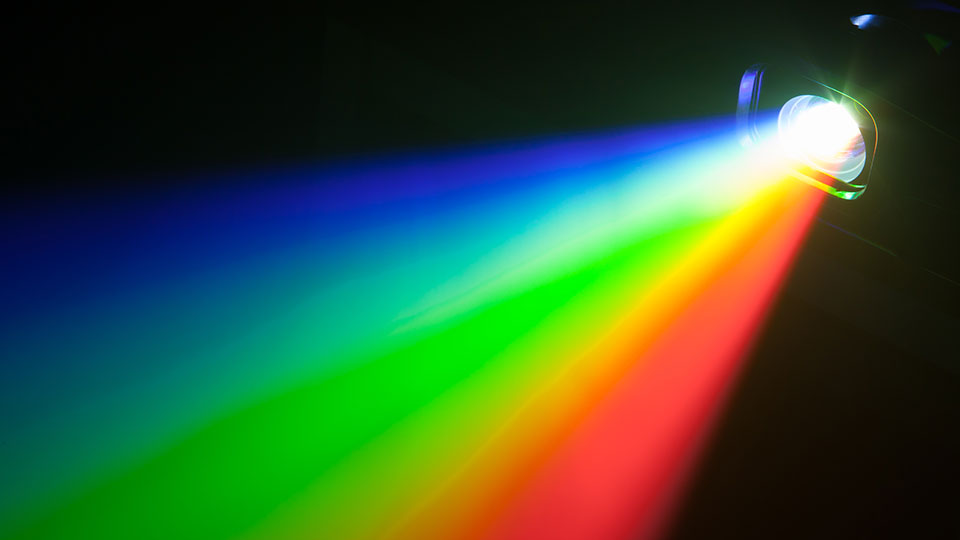It started with measurements in the UV range
OPSIS monitoring technology is based on a well-established scientific principle for identifying and monitoring concentrations of different gases, differential optical absorption spectroscopy (DOAS). When DOAS is used in the ultraviolet wavelength range, we call the technique UV-DOAS, and then a spectrometer is used to monitor the light absorption. The first types of OPSIS monitoring instruments were based on the UV-DOAS technology.
The STRUCTURE OF THE MEASUREMENT SYSTEM
In the UV-DOAS technique, a light beam from a special light source - a high-pressure xenon lamp - is projected along a monitoring path. The light from the xenon lamp is very intense and contains both visible, ultraviolet and infrared wavelengths. It is picked up by a receiver and passed through an optical fiber to the analyser. The optical fibre makes it possible to place the analyser in a different place than the receiver, which is sometimes installed in an aggressive environment.
The analyser consists of a spectrometer with a light detector, a computer, and associated control electronics. The spectrometer splits the light into its wavelengths using an optical grating. Different wavelength ranges may need to be detected for different types of molecules. The grating can therefore be rotated so that the desired wavelength ranges can be detected with high precision.
A spectrometer works best in the ultraviolet range. The UV-DOAS technique is therefore primarily used for monitoring concentrations of molecules that exhibit absorption in the UV range. Then a detector for UV light is also used. In some cases, the spectrometer also works well for molecules with absorption in the infrared range. Then the spectrometer is supplemented with a detector for infrared light and the technique is then called UV/IR-DOAS.

DETECTION OF SPECTRUM, CALCULATIONS
The light split in the grating is converted into a measured spectrum in the following way. A narrow slit sweeps past in front of the detector at high speed. During the sweep, the signal is measured a large number of times. The result is a measured spectrum in the selected wavelength range. This spectral reading is repeated a hundred times per second. As the sweep is performed, the individual spectra are added to an average pending evaluation.
The evaluation is done for one wavelength range at a time. First, the measured spectrum is divided by a reference spectrum, i.e. a pre-recorded spectrum free of absorption. The result is then compared with one or more similarly pre-recorded absorption spectra for relevant molecular types where the respective concentration is known. A magnitude factor for each pre-recorded spectrum is varied until the best possible fit to the measured spectrum is found. The result gives the average value of the concentration of the molecular type(s) that were in the monitoring path during the time the measured spectrum was collected.

BLOGS ABOUT DOAS
Read our blog posts about the UV-DOAS technology.

